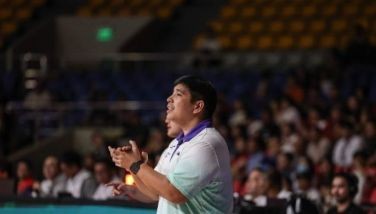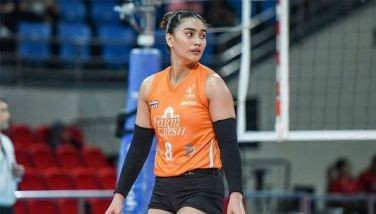Wishes for the decade
The new decade is upon us, a rare chance to look at what trends may (we hope) transform sports for the medium to long term. It’s a chance at deeper reflection on how we’ve been, how we could be, how we should be. The last decade was witness to the rise of many new sports in the Philippines: women’s volleyball, skateboarding, e-sports, and others like bobsled. Some re-emerged, like 3x3, bodybuilding and arnis. Sport is becoming more democratic; there is room for everyone. What do we want to see in the 2020’s?
A women’s basketball league. This has been a long time in coming. In the run-up to the 1996 Olympics in Atlanta, the US women’s basketball team traveled around the world, playing mostly against men’s teams. Their goals were simple: win an Olympic gold and have their own basketball league. They did both, and even had two leagues, of which only the WNBA survives. The ascendance of Philippine women’s basketball can be traced directly to the dominance of National University’s program under coach Pat Aquino. Now, the Philippines is Southeast Asian Games champion, and women’s hoops is cool.
Recreational parks. When I was a kid, our parents had to scream and shout for us to stop playing and come into the house. Now, we have to scream and shout to get our kids to go outside and work up a sweat. This is something for local government units to look into. Traditionally, parks had concrete obstacles and metal slides and monkey bars. Community centers have kept on building cement basketball/volleyball courts. Old warehouses were converted into badminton courts until the fad plateaued. But if the country is to provide an attractive alternative to sitting around with gadgets, then skate parks and obstacle courses would be the gateway sports.
Stronger physical education. PE’s potential to change the country has always been underrated. A stronger physical education program would make students take it more seriously, try many sports, and develop healthier habits. There are no competitions among schools for non-varsity athletes, and that’s part of the problem. Intramural tournaments among schools could spark growth in this area, and be a training ground for future athletes.
More sports books. This writer is proud to have co-authored The Philippine Yearbook’s “The Fifty Greatest Filipino Athletes of All Time” with fellow The STAR columnist Joaquin Henson. However, the sad fact is that you could count on both hands the number of sports books emanating from the Philippines. Rafe Bartholomew’s book on Filipino basketball, Richard Dy’s self-published tome on sports icons, and Ronnie Nathanielsz’s memoirs are among the few examples that stand out. In the age of sports bloggers, we are seeing fewer and fewer Filipino sports books.
Cabinet-level sports. For almost two decades, there has been a legislative effort to elevate the Philippine Sports Commission to a cabinet-level position. Currently, the chairman of the PSC carries the rank of an undersecretary under the Office of the President. If he were a full-blown Cabinet secretary, sports would have a permanent budget, more influence, and better infrastructure. This would catapult Philippine sports to a higher level, and make decision-making easier.
Indigenous sports. Arnis finally has the organizational might behind it to make a difference. But there are so many indigenous sports and athletes who could likewise influence succeeding generations. But they have to be taken into the mainstream, and this means educating the public. As less and less children play outdoors even in the streets, less and less Filipinos will experience local games and sports. It would be a shame if our progeny lose that part of our identity as a people.
Sports curricula. Love for sports begins with awareness. Sports journalism is only an elective in a few universities in the Philippines. We don’t teach sports history, writing, broadcasting, psychology, team psychology, managing sports facilities or many other courses that are available in the US, Australia or Europe. Grassroots development would be better served if there’s an academic leaning towards it. Sport has played second fiddle to health and nutrition, but it is just as important. There are many occupations locally and internationally that Filipinos would be very proficient at.
Sports under TESDA. In connection with sports knowledge, having a government agency to accredit and certify Filipinos for foreign deployment in sport, employment opportunities would multiply. A decade ago, this writer proposed this to TESDA or the Technical Skills Development Authority. TESDA has annual budget in the billions of pesos to ensure that tens of millions of overseas Filipino workers meet international standards.
The agency has well over 300 courses. None of them are sports related. Yet, in other countries, Filipinos earn decent income coaching in basketball, dancesport, martial arts, boxing and so on. They would earn even more with a government license.
Here’s hoping somebody’s listening, and some of these happen in the next decade.
A blessed New Decade to all!
- Latest
- Trending



























